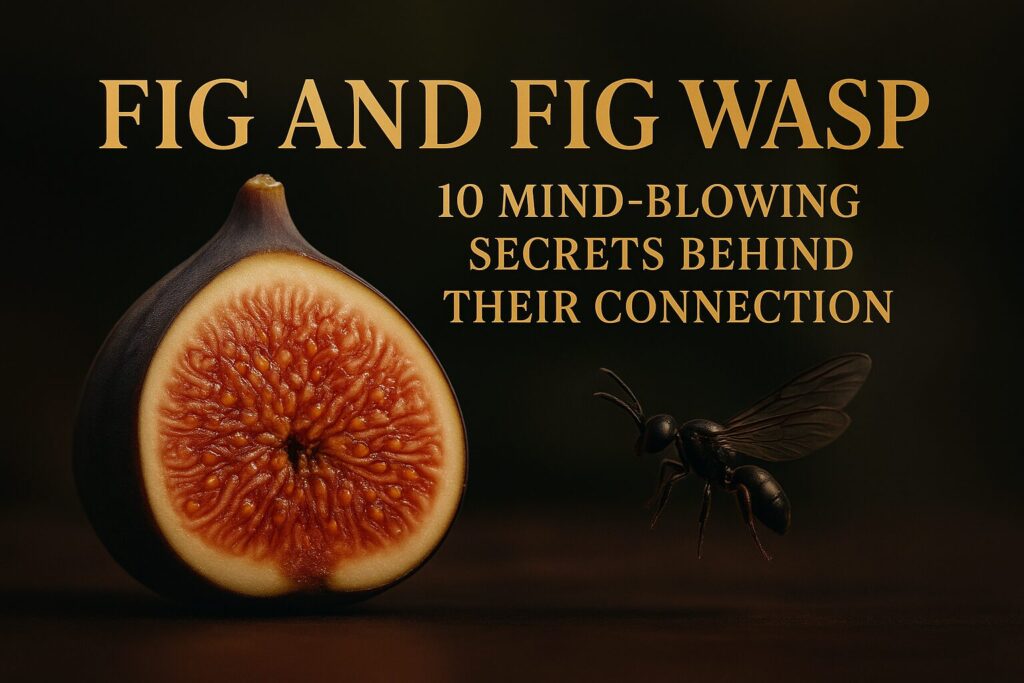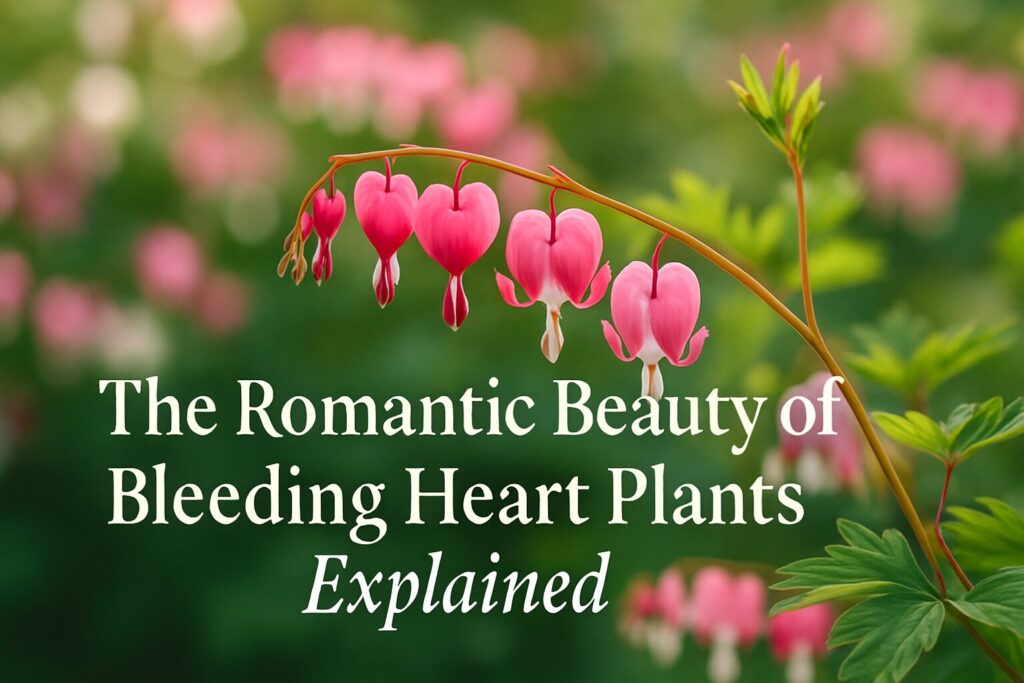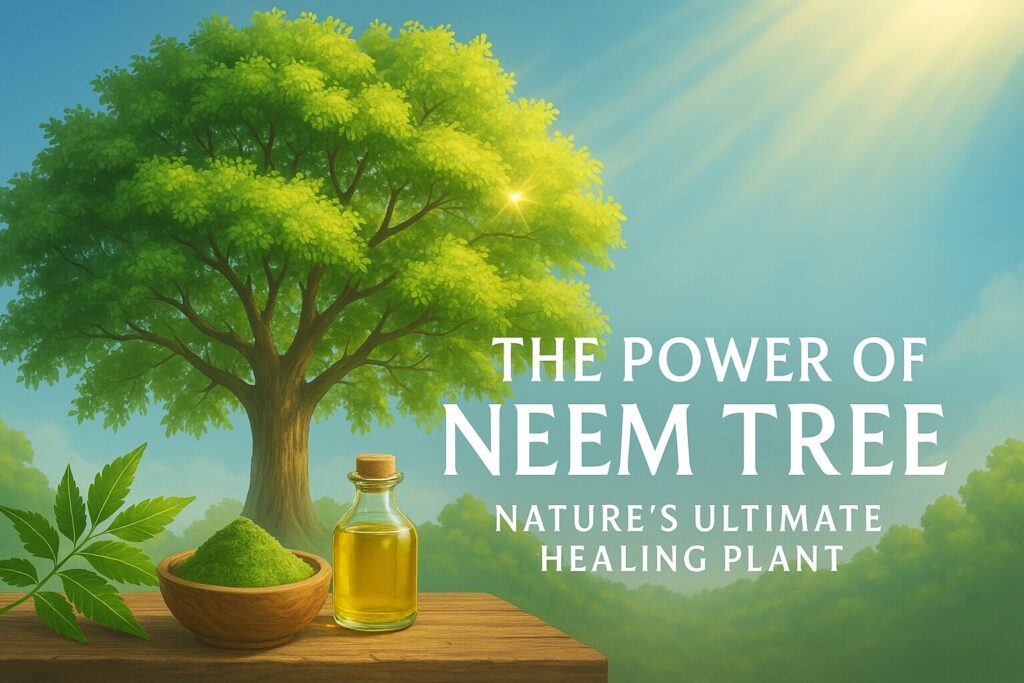Discover the Baobab Tree, the legendary Tree of Life. Learn its facts, benefits, cultural stories, and why this ancient giant matters more than ever today.
Table of Contents
Introduction
The Baobab Tree, often called the Tree of Life, is one of the most iconic and revered trees in the world. Towering like a guardian over the African savannas, this ancient giant is more than just a plant, it’s a symbol of survival, community, and resilience.
Its massive trunk, which can reach up to 30 feet in diameter, looks almost as if it’s growing upside down with roots pointing to the sky. But the real wonder lies within. From storing water in its trunk during droughts to offering highly nutritious fruits and healing leaves, the Baobab Tree supports both ecosystems and human communities.
Often found at the center of villages, its shade has protected generations, its bark has provided shelter and medicine, and its fruit has nourished people and animals alike. In times of crisis, the Baobab Tree has stood firm quite literally offering life when nothing else can.
In this article, we’ll explore the full story of the Baobab Tree: where it grows, why it’s called the Tree of Life, how it benefits health, and why its role is more important today than ever before.
Let’s uncover the hidden power of this extraordinary tree.
Where Does the Baobab Tree Grow? Exploring Its Natural Habitat
The Baobab Tree thrives primarily in the dry, open landscapes of sub-Saharan Africa, where it has evolved to withstand extreme conditions that few trees can survive.
You’ll find baobabs scattered across:
- The savannas of Senegal, Madagascar, and South Africa
- The arid plains of Namibia and Botswana
- Parts of Australia and the Arabian Peninsula (introduced populations)
Madagascar alone is home to six of the world’s nine baobab species, including the famous Adansonia grandidieri, which lines the Avenue of the Baobabs a breathtaking corridor of colossal trunks reaching skyward.
The Baobab Tree has adapted ingeniously to its environment:
- Its trunk acts as a giant sponge, storing up to 32,000 gallons (120,000 liters) of water during the rainy season to endure months of drought.
- Its bark regenerates quickly after damage, helping the tree survive wildfires and human harvesting.
- The tree sheds its leaves during dry periods to reduce water loss.
Recent ecological studies have revealed that baobabs play a vital role in stabilizing soils and supporting biodiversity. Their massive canopy provides nesting grounds for birds like hornbills, while their fallen flowers nourish pollinators and grazing animals.
Despite their resilience, some of Africa’s oldest baobabs have suffered in recent decades. Researchers from Nature Plants (2018) documented the sudden collapse of several millennia-old specimens, possibly linked to climate change and prolonged drought stress.
These unique habitats remind us why protecting the Baobab Tree is essential not only for cultural heritage but for sustaining fragile ecosystems across Africa.
Why Is It Called the Tree of Life? The Meaning Behind the Name
The Baobab Tree has earned its title as the Tree of Life because, quite simply, it provides almost everything needed for survival in harsh climates. From its roots to its crown, nearly every part of the baobab is useful.
Here’s why communities have revered it for thousands of years:
- Water Storage: In times of drought, its massive trunk retains water, which people have historically tapped in emergencies. Early explorers and nomadic tribes sometimes carved hollows to collect and access this life-saving reservoir.
- Nourishment: The baobab’s fruit, sometimes called “monkey bread,” is among the most nutrient-dense foods on Earth. Rich in vitamin C, fiber, calcium, and antioxidants, it sustains people and wildlife alike.
- Shelter: Hollow trunks have been used as storage spaces, homes, and even small chapels. In Western Australia, a massive baobab served as a temporary jail in the 1890s.
- Medicine: Bark and leaves yield traditional remedies for digestive issues, fevers, and inflammation. In rural clinics, poultices and infusions are still prepared from the tree’s parts.
The Baobab Tree has also become a powerful symbol:
- In African oral tradition, it represents endurance, community, and wisdom.
- The tree’s silhouette is often a gathering place for elders to share stories and settle disputes.
- Some cultures believe baobabs house ancestral spirits or serve as a bridge between the earthly and spiritual worlds.
Its resilience is astounding. Even when the bark is stripped away for rope or cloth, the tree regenerates rather than dies reflecting the spirit of regeneration that defines the Tree of Life.
Put simply, few living things embody the idea of sustaining life under the most challenging conditions as completely as the Baobab Tree does.
Baobab Tree Facts You Probably Didn’t Know
Even if you’ve seen photos of the Baobab Tree, some of its qualities are so extraordinary they almost sound mythical. Here are surprising facts that showcase just how unique this “Tree of Life” really is:
- Ancient Giants: The oldest baobabs are estimated to be over 6,000 years old, predating the Great Pyramid of Giza. One of the most famous, the Sunland Baobab in South Africa, was carbon-dated to nearly 1,700 years old before it partially collapsed in 2017.
- Upside-Down Look: During the dry season, when baobabs shed their leaves, their bare branches resemble roots sticking into the sky fueling local legends that the gods planted them upside down in punishment.
- Baobab Tree Flower and Fruit: The baobab flower is large, white, and pendulous, opening at dusk and attracting fruit bats for pollination. The fruit, often shaped like an oversized gourd, has a velvety shell and contains dry, tangy pulp.
- Record Storage: A mature baobab can hold more than 100,000 liters of water in its trunk enough to supply dozens of people for months.
- Fireproof Bark: Its cork-like bark is highly fire-resistant and can be stripped repeatedly without killing the tree, making it a renewable source of rope, cloth, and even roofing material.
- Baobab Tree Lifespan: Unlike many trees, baobabs don’t form annual rings, making precise aging difficult. Scientists often rely on radiocarbon dating to estimate their true age.
- Natural Superfood: Gram for gram, baobab pulp has six times more vitamin C than oranges and twice as much calcium as milk.
Researchers at the Royal Botanic Gardens, Kew, call baobabs “the world’s biggest succulent.” This classification reflects not only their water-storing adaptations but also their remarkable ability to thrive in the most unforgiving environments.
Whether you admire them for their biology or their cultural importance, the Baobab Tree is simply in a class of its own.
Nutritional and Medicinal Benefits of Baobab Fruit and Leaves
The Baobab Tree is often hailed as a nutritional powerhouse and for good reason. Its fruit, leaves, and seeds are among the most nutrient-rich natural products available, offering remarkable health benefits recognized by both traditional healers and modern nutritionists.
Here’s a closer look at what makes it so special:
- Vitamin C Richness: Baobab pulp contains about 300 mg of vitamin C per 100 grams, which is nearly six times the amount in oranges. This supports immune function, collagen production, and antioxidant protection.
- Gut Health: The fruit pulp is almost 50% fiber, with a unique prebiotic effect that feeds beneficial gut bacteria. Recent studies published in Nutrition Reviews have linked baobab’s soluble fiber to improved digestion and satiety.
- Minerals and Micronutrients: Baobab fruit and leaves deliver essential minerals like calcium, potassium, magnesium, and iron. These nutrients are crucial in areas where diets are otherwise limited.
- Antioxidants: According to research from the Journal of Food Chemistry, baobab powder has one of the highest antioxidant capacities recorded for any fruit more than blueberries, goji berries, or pomegranates.
- Blood Sugar Control: Emerging evidence suggests that baobab may slow the release of sugars into the bloodstream, potentially helping regulate glucose levels after meals.
Traditional medicinal uses of the Baobab Tree are equally impressive:
- The leaves are dried, powdered, and brewed into teas to reduce fever, ease digestive discomfort, and treat inflammation.
- Poultices from fresh leaves or bark are applied to wounds and insect bites for their antimicrobial properties.
- In West African communities, baobab seeds are roasted and ground as a remedy for toothaches.
Today, baobab fruit powder has become a global health supplement. It’s added to smoothies, energy bars, and even cosmetic products for its rich nutrient profile and antioxidant potential.
For local communities, however, the benefits are far from trendy they are part of everyday survival and wellbeing.
How Local Communities Use the Baobab in Daily Life
For centuries, the Baobab Tree has been far more than a backdrop on the African landscape it’s a living storehouse that supports daily life in ingenious ways. From nutrition to shelter, communities have integrated every part of the baobab into their routines.
Here are some of the most important uses:
- Food and Drink:
- Baobab fruit pulp is eaten raw, mixed into porridge, or dissolved in water to create a tangy, refreshing drink sometimes called “monkey bread juice.”
- The leaves are harvested fresh or dried, then cooked into stews or ground into a powder rich in vitamins and minerals.
- In some regions, baobab seeds are fermented or pressed for edible oil.
- Household Materials:
- Strips of the bark are carefully removed to make rope, mats, fishing nets, and baskets. The tree regenerates this bark, making it a sustainable source of fiber.
- Large hollow trunks have served as grain silos, water cisterns, and even makeshift homes.
- Traditional Medicine:
- Bark, leaves, and fruit pulp are used to treat diarrhea, malaria symptoms, and skin conditions.
- In some cultures, the powdered fruit is applied to inflamed gums or mixed into a paste for wounds.
- Community Spaces:
- Because of their massive size and shade, baobabs often become communal gathering points where elders meet, ceremonies are held, and stories are passed down.
One striking example comes from the village of Nyae Nyae in Namibia, where elders have used the same ancient baobab trunk as a council chamber for generations. The space inside stays cool even in scorching heat a natural refuge created by the Baobab Tree itself.
This day-to-day reliance isn’t just about practicality. It reflects a deep cultural relationship with the tree, an understanding that it is both provider and protector.
Baobab in Culture and Folklore: Stories from Africa
The Baobab Tree isn’t just a botanical marvel it’s a powerful cultural symbol woven into the myths, legends, and spiritual beliefs of many African communities. Known as the “Tree of Life,” the baobab often represents wisdom, strength, longevity, and connection to ancestors.
A Tree of Stories and Spirit
In many African oral traditions, the baobab is thought to be the first tree created by the gods. But when it grew too proud and complained about its neighbors, the gods are said to have pulled it from the ground and planted it upside down. This tale humorously explains the baobab’s strange, root-like branches that stretch into the sky.
In Senegal, the baobab is believed to house spirits of the dead. Some trees are treated as sacred places where people leave offerings or perform rituals to honor ancestors.
Among the San people of Southern Africa, there are stories of giant baobabs that were once humans or animals, turned into trees by divine forces. These legends are often shared with children under the shade of baobab trees themselves making the tree both the subject and setting of tradition.
A Symbol of Unity and Wisdom
- In Malian folklore, the baobab is called the “village tree,” where decisions are made and truth is spoken. Village elders gather beneath its shade to resolve conflicts and guide the community.
- In Zimbabwe, the Shona people associate the baobab with the moon and fertility, believing that its fruit can aid in conception.
Some baobabs have even become landmarks of spiritual pilgrimage. For example, the “Baobab of Gandiol” in Senegal is visited annually by people who pray for good harvests and health.
Through these stories, the Baobab Tree becomes more than a plant it becomes a storyteller, a sanctuary, and a sacred bridge between generations.
Why the Baobab Tree Matters More Than Ever Today
In the 21st century, the Baobab Tree has gained new relevance far beyond its traditional uses. As the world grapples with climate change, food insecurity, and the erosion of cultural heritage, this ancient tree has emerged as a critical resource for both local communities and the global community.
Climate Resilience
The baobab’s extraordinary drought resistance makes it an anchor in fragile ecosystems. When nearly everything else withers, the baobab still stands:
- Its deep roots stabilize dry soils, preventing desertification.
- The canopy moderates temperatures below, creating microhabitats for animals and other plants.
- Its flowering and fruiting cycles support pollinators and wildlife during lean seasons.
As prolonged droughts intensify across Africa, these ecological roles are becoming essential buffers against environmental collapse.
Nutrition and Health Security
Malnutrition remains a serious challenge in many rural regions. The Baobab Tree offers:
- Sustainable, locally accessible sources of protein, fiber, and vitamins.
- Income opportunities through harvesting and selling baobab fruit powder a growing international superfood market projected to exceed USD 5 billion globally by 2030 (according to Grand View Research).
By protecting and promoting baobab harvesting, communities can improve health and build more resilient livelihoods.
Cultural Heritage
Many baobabs are hundreds or even thousands of years old. They embody the memory of generations who have gathered beneath their branches to share stories, resolve disputes, and celebrate life milestones.
As old trees die whether from age, disease, or climate pressures there is an urgent need to document and protect this cultural heritage before it disappears. Conservation groups are now working with local leaders to pass on knowledge about baobab care and uses.
Conservation Challenges
Recent studies published in Nature Plants have documented the sudden decline of several of the oldest baobabs. While some die of natural causes, researchers suspect that rising temperatures and changing rainfall patterns are accelerating their demise.
This makes the Baobab Tree a symbol of our shared responsibility: conserving not only a unique species but also the cultural and ecological knowledge it holds.
Conclusion
From its towering trunk to its nutrient-rich fruit, the Baobab Tree truly deserves its title as the Tree of Life. For thousands of years, it has been a cornerstone of survival feeding, healing, sheltering, and inspiring countless generations across Africa and beyond.
Its remarkable adaptations, such as storing tens of thousands of liters of water and regenerating its bark, make it a living symbol of resilience in the harshest landscapes. As we have seen, the Baobab Tree is not just a relic of the past but a vital ally for the future. It helps stabilize fragile ecosystems, offers sustainable nutrition in food-insecure regions, and provides economic opportunities for communities harvesting baobab fruit and leaves.
But the baobab’s value isn’t limited to its practical uses. In culture and folklore, it is a storyteller, a gathering place, and a sacred link to ancestors an embodiment of humanity’s connection to the natural world.
Today, as climate change threatens even these ancient giants, conserving the Baobab Tree has never been more important. Whether through protecting wild populations, supporting fair-trade baobab products, or simply learning and sharing its story, each of us can help ensure that this irreplaceable “Tree of Life” continues to thrive.
By understanding, respecting, and celebrating the baobab, we honor not only a botanical wonder but the deep wisdom it represents—an enduring lesson in resilience, generosity, and hope.




